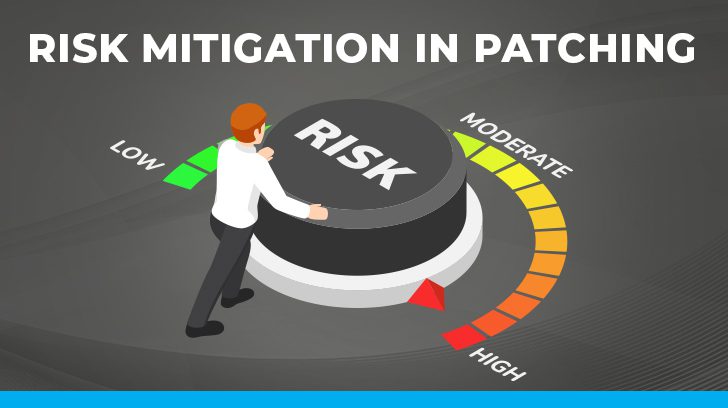In the quickly evolving landscape of technology, maintaining the security and functionality of physical servers is imperative. Patch management is a critical component of this maintenance that involves updating server software to fix vulnerabilities, improve performance, and determine compatibility with other systems. Despite its importance, patch management is often loaded with risks that, if not properly controlled, can lead to security breaches and operational disruptions.
In 2017, a global financial services firm learned the hard way about the importance of patch management. Despite numerous warnings and notifications from its software vendors, the firm had not applied critical security patches to its physical servers. The IT department was understaffed and overwhelmed, leading to delays in their patching schedule. As a result, several known vulnerabilities remained unpatched for months.
The firm’s IT team noticed unusual activity on their network. By the time they investigated, it was too late. A notorious ransomware known as “WannaCry” had infiltrated their system through an unpatched vulnerability in their server operating system. The malware spread rapidly, encrypting sensitive data, and locking users out of their systems.
Panic ensued as the firm scrambled to contain the attack. Critical financial data was held hostage, and the firm was forced to pay a hefty ransom to regain access. In the aftermath, the firm faced severe backlash from clients and regulatory bodies for failing to protect sensitive information. The incident resulted in a significant financial loss, damaged reputation, and a loss of customer trust.
Understanding Patch Management
Patch management is the process of acquiring, testing, and installing multiple patches on existing applications. It is a critical component of maintaining the security and functionality of IT infrastructure. Patch management is essential for fixing security vulnerabilities and other bugs, as well as improving the usability and performance of the servers.

Risks Associated with Patch Management
While patch management is essential for maintaining the security and functionality of IT systems, it is not without its risks. Despite its importance, patch management carries several risks that can significantly impact an organization if not properly managed. By understanding and addressing these risks, organizations can develop robust patch management strategies that minimize vulnerabilities, ensure compatibility, and maintain operational continuity.
Security Vulnerabilities
One of the primary reasons for patching software is to address cybersecurity vulnerabilities. When patches are not applied promptly, systems remain exposed to known threats. Cybercriminals often exploit these vulnerabilities to gain unauthorized access, steal data, or deploy malware. The risk is particularly high for critical systems and applications that handle sensitive information.
Patches do not always apply successfully. Failed patches can leave systems in an unstable state, potentially causing data loss or corruption. Identifying and addressing failed patches can be time-consuming and resource-intensive, further complicating the patch management process.
Operational Disruptions
Patches can sometimes cause compatibility issues with existing applications and systems. This risk is especially prevalent in complex IT environments with diverse software ecosystems. Incompatible patches can lead to system crashes, application errors, and degraded performance, disrupting business operations.
Applying patches often requires restarting systems or taking them offline temporarily. This can result in downtime and disrupt business operations, particularly if the patches are not scheduled appropriately. Unplanned downtime can lead to lost productivity, customer dissatisfaction, and financial losses.
Resource Risks
Effective patch management requires significant resources, including skilled personnel, time, and budget. Organizations with limited resources may struggle to keep up with the constant stream of patches released by software vendors. This can lead to delays in patching and increased exposure to security risks.
Mistakes in patch deployment, such as applying the wrong patch or overlooking critical updates, can lead to vulnerabilities and operational issues. Additionally, improper testing or incomplete documentation can exacerbate the impact of human error.

Effective Controls for Patch Management
- Automated Patch Management Tools: Utilize automated tools to streamline the patch management process. These tools can regularly scan servers for missing patches, download updates, and apply them with minimal human intervention.
- Patch Testing: Before deploying patches to production servers, test them in a controlled environment. This helps identify potential compatibility issues and determines that the patches do not disrupt existing services.
- Regular Patch Schedules: Establish and adhere to a regular patching schedule. Routine maintenance windows allow for predictable downtime, minimizing disruptions to business operations.
- Risk-Based Patch Prioritization: Prioritize patch deployment based on the severity of the vulnerabilities they address. Critical security patches should be applied as soon as possible, while less critical updates can follow a more relaxed schedule.
- Backup and Recovery Plans: Always have a reliable backup and recovery plan in place. In the event that a patch causes issues, you should be able to quickly restore your servers to their previous state.
- Monitoring and Reporting: Implement monitoring systems to track the status of patch deployments. Regular reports can help determine that all servers are up-to-date and identify any patches that failed to apply.
- User Training and Awareness: Educate IT staff about the importance of patch management and best practices while implementing standardized patch management procedures and best practices. Awareness can help prevent accidental oversight and determine that patches are applied correctly.
Conclusion
Effective patch management is crucial for maintaining the security, stability, and compliance of physical servers. While patch management is essential for maintaining the security and functionality of IT systems, it is not without its risks. By understanding the associated risks and implementing robust controls, organizations can protect their infrastructure from vulnerabilities, minimize operational disruptions, and adhere to regulatory requirements. Automation, regular schedules, thorough testing, training personnel, and comprehensive backup plans are the cornerstones of a sound patch management strategy. With these practices in place, organizations can mitigate the risks and determine whether their servers remain secure and efficient.
Please reach out to Linford & Company if you are looking for additional guidance on navigating the risks of patch management. Our team is also highly specialized in a variety of audit services, including SOC 1, SOC 2, Penetration Testing services, and more. Let us guide your organization through its next audit with confidence.

Jessica joined Linford & Company, LLP in 2023, bringing more than twelve years of experience specializing in SOC 1 and SOC 2 examinations and related assurance services. Her background includes extensive work in internal controls, SOX compliance, ICFR, third-party assurance, and attestations and examinations performed under PCAOB and AICPA standards. Before joining Linford & Company, Jessica spent twelve years with Deloitte, serving in leadership roles for the last eight. She has led numerous SOC engagements across a variety of industries, helping clients strengthen control environments and meet evolving compliance expectations. Jessica is a Certified Information Systems Auditor (CISA) and holds both a Bachelor of Science in Accounting and a Master of Accounting from Southern Illinois University–Carbondale.




